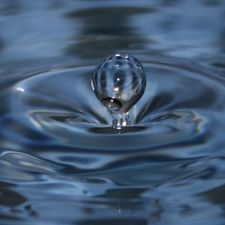(photo credit)
Review: SFCMP 40th Anniversary Opening Concert: Points in Recent History
Rating: 4 out of 5 stars
SFCMP kicked off its 40th season with a characteristically eclectic program that reminded me why the concert producer has been able to draw loyal subscribers for decades. The pieces on the program showed an appreciation for the phenomenon of the concert as a social event belonging to a specific community, and the concert reflected the eclectic spirit of American new music.
The program started out with two shorter works by French composer Jérôme Combier: Essere pieta and Heurter la lumière encore. Both were small, intimate chamber works that rarely rose above a mezzopiano. These were my favourites for the evening.
Combier brings an unmistakably French, timbre-focused aesthetic to both pieces, augmented by a nuanced sense of phrasing. Interactivity, a musical feature lost in too much timbre-based music, made Combier’s pieces multidimensional. Delicate lines would jump audibly from one instrumentalist to another, building a kind of conversation that prevented the pieces from ever seeming too long.
Part of the joy of concert-going, in my opinion, is seeing performers interact on stage. Combier seems to feel the same way. These pieces are fun to watch and visibly fun to play. They respect the audience and the performers without sacrificing aesthetic integrity.
SFCMP ended the first half with a late John Cage work, Seven, which was co-commissioned by the ensemble in 1988. Consisting of long fragments that are to be intertwined over the course of 20 minutes, this isn’t a piece for everyone. Seven requires a certain amount of stamina and patience, and after the intricate terseness of Combier’s music, it felt a little uninspired: an average piece by a master composer. The Cage was the low point of the evening for me.
After the intermission, flautist Tod Brody played a solo piece by young Italian composer Gabriele Vanoni, written in 2008. Titled Space Oddities, the piece falls clearly within the extended-technique aesthetic of the recent solo flute repertoire. I was impressed with Vanoni’s ability to build an interesting form, which most composers in this genre seem to consider optional. Too many of these solo flute pieces are technical tours de force with no consideration for the fact that music takes place in time. Vanoni, on the other hand, tied each gesture to the whole. He seems to realize that a gesture that sounds good at the opening of the piece won’t automatically have the same effect at the end.
Despite the fact that none of the composers on the program could be said to have belonged to the same “school” of composition, I still wouldn’t have expected SFCMP to close with Philip Glass. They played an early Glass piece, Music in Similar Motion, from 1969. Yet what surprised me more was that the piece actually worked in this context. Musically, Vanoni and Glass are about as far apart as any two composers can be. I expected the Glass to be a rough transition and a let-down.
I don’t know how they did it, actually. It might have had to do with percussionist William Winant’s enthusiastic, rock-‘n-roll–style roll call of the ensemble. Or it could be that the players bring a palpable enthusiasm to everything they present on stage.
Not many ensembles can pull off eclecticism. It requires a diverse skill set and an intuitive understanding of the different ways of appreciating music. SFCMP is one of the few that manages this challenge consistently. I suspect they developed the ability as a matter of survival in the dog-eat-dog American music world. Along the course of the last four decades, however, they’ve moved from survival to mastery.
The 40th season opener was neither a retrospective of the ensemble’s history nor a radical departure from its roots. It was, simply stated, a very typical SFCMP concert. But the fact that this is their standard offering gives us hope that we may see the group perform for another 40 years.


